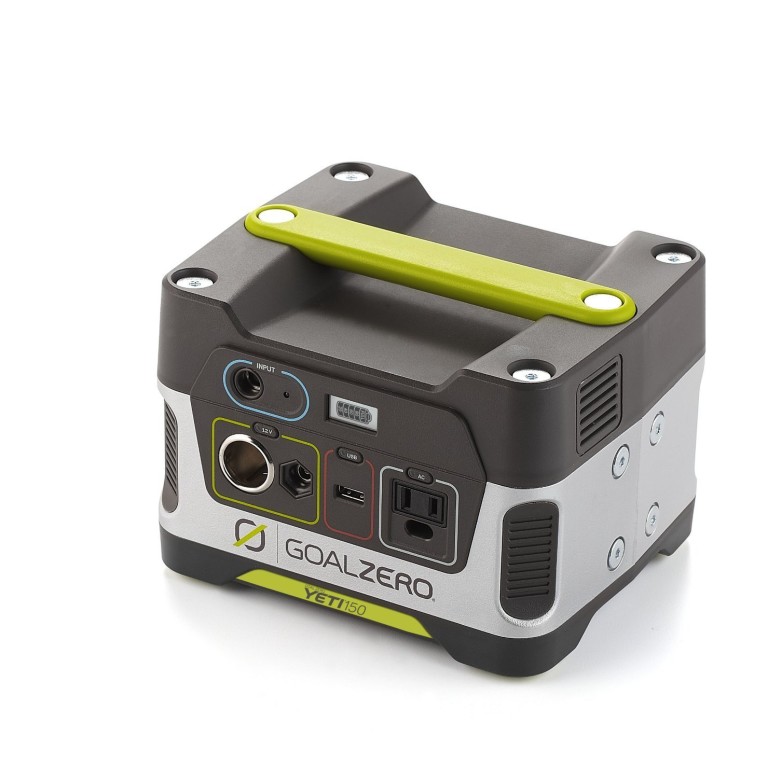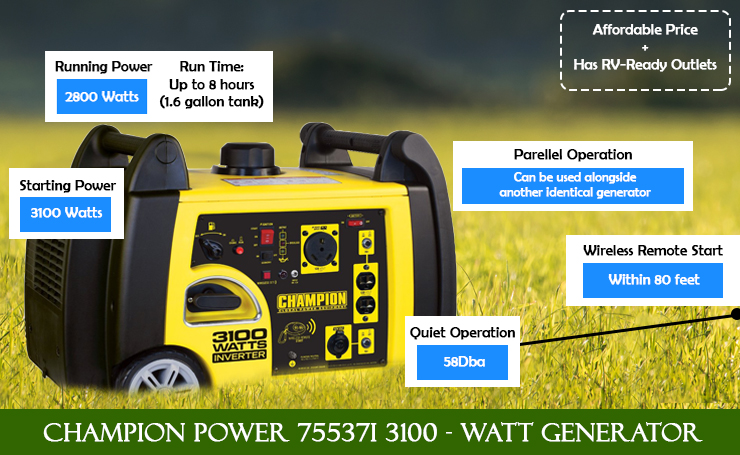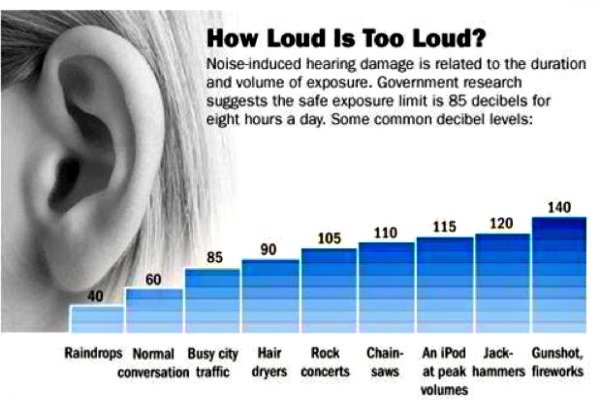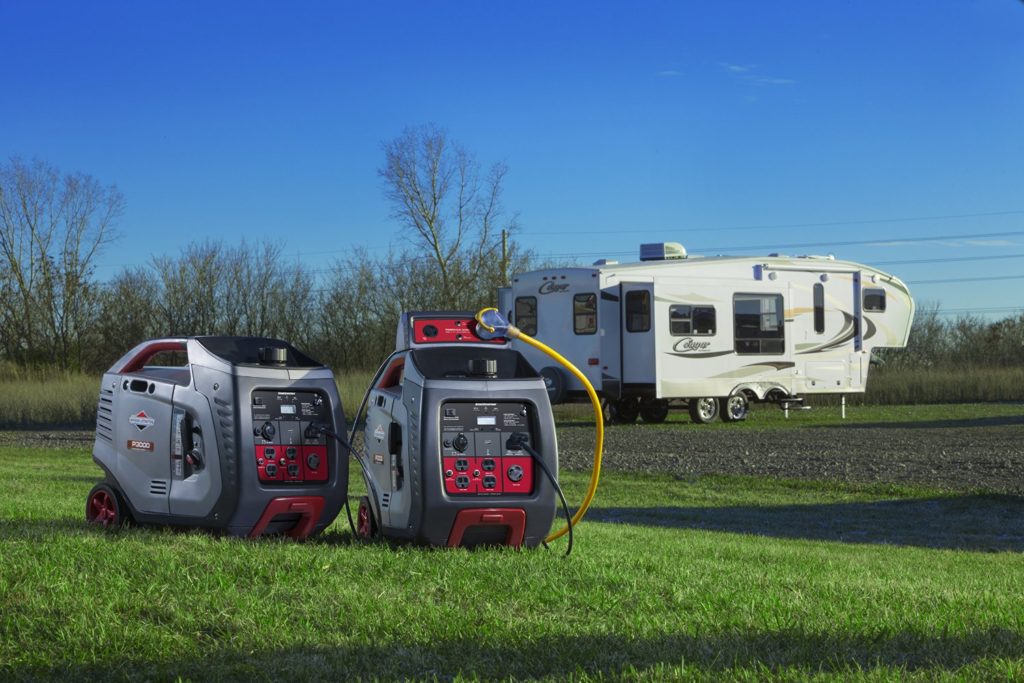
A solar generator can be defined as a machine that generates electricity using the sun’s energy.
How do solar generators work?
Solar generators capture the sun’s rays (energy) via solar panels. The energy is then stored in batteries and released through an inverter. Solar generators consist of 4 main components namely; photovoltaic (PV) panels, inverters, batteries and charge regulators. The PV panels capture the sun’s rays and convert them into electricity which is sent to the charge regulator which in turn pumps the electricity into the batteries stopping the process when the batteries are fully charged.
The inverter converts the direct current (DC electricity) from the batteries to AC current i.e. what we use. In a nutshell, solar generators work like simple systems with no moving parts. Their working mechanism offers a variety of benefits over traditional power generators which utilize fossil fuels to generate electricity.
For instance, power generation takes place without producing harmful carbon emissions that come from coal and natural gas power plants. Some of the main benefits of solar generators are discussed below;
Main solar generator pros
1. No exhaust fumes (100% environmental friendly)
This is by far one of the most important benefits of solar generators. Unlike natural gas and fuel generators, solar generators don’t product any harmful gasses. This makes them safe for you and the environment.
2. Safer to use
Solar generators are also safer to use and handle since they don’t utilize flammable fuels.
3. Cheaper to use
Solar rays are free and readily available, unlike fossil fuels. This makes solar generators the cheapest electricity generators available today. The generators also need very little to no servicing since they don’t have any moving parts.
4. No noise
Solar generators also stand out from other types of generators because they operate silently. Since they don’t feature combustion engines, they don’t make any noise which makes them ideal for indoor use.
5. Low maintenance
Unlike fuel generators, a typical solar generator can run for years without the need for maintenance.
Main cons
Like everything else, solar generators have their own cons. They are however few and manageable. They include;
1. High initial cost
The initial cost of buying a solar generator is usually higher than the initial cost of buying other types of generators. Although this may discourage many people, it’s important to note that the initial cost of buying a solar generator far outweighs the long-term benefits i.e. the amount of money you will save when you lower or get rid of your electricity bill. Furthermore, solar technology is evolving at a fast pace. With more efficient generators coming up every day, the cost factor is bound to be a thing of the past.
2. Lengthy recharges
It also takes a considerable amount of time to recharge a solar generator especially when the batteries are fully drained. As a result, it’s important to conserve electricity. This con can however be dealt with by investing in batteries that match your electricity consumption. By doing this, you don’t need to worry about recharges because you will have enough electricity at any given time.
3. Weight
Solar generators are usually heavier than typical generators which introduces portability challenges. It is, however, important to note that weight is a small inconvenience to deal with when you consider the cost savings. You probably not need to move your generator frequently unless you have bought one for unique applications. Furthermore, there are lightweight options matching the most unique applications.
What can be powered by a solar generator?
Solar generators can power everything regular generators can power. In a household setting, a solar generator is capable of meeting all the electricity needs of a typical household which includes powering all electrical appliances, gadgets, lighting name it!
Now that you already know what solar generators are, how they work, their top pros and cons and what they can power, let’s discuss the most important things to consider when looking for a solar generator.
Important factors to consider when buying a solar generator
You should consider a number of things before you decide to buy a solar generator. Most of these considerations revolve around the components i.e. quality, type, design etc. You should also consider other factors such as online reviews and price. Below is a more in-depth discussion of the most important considerations.
1. Consider the battery storage capacity
This is by far one of the most important considerations to make before you decide to buy a solar generator. The battery storage capacity is very important because it dictates the usability of a solar generator. You should choose a battery that matches your electricity consumption level since solar generators only charge during the day when there is sunlight. At night, they last depending on the battery’s storage capacity.
Solar generator batteries are rated in amp hours (amp/hr) i.e. 12v 100 amp/hr etc. It is, however, important to note that most household appliances and gadgets like laptops have their power usage measured in watt-hours. It’s, therefore, important to convert the total consumption of these appliances and gadgets into amp hours in order to find the exact consumption level.
Ideally, you should calculate the total number of watts consumed by what you intend to power with your solar generator and then convert the total into amp hours to determine the battery rating that will serve you perfectly. For our example above a 12volt 100 amp/hr battery has a watt-hour rating of 1200 (i.e. 12 x 100). It is, however, important to pay attention to the usable watt-hours since not all watt-hours should be consumed (ideally 2/3 of the capacity) especially in lead-acid batteries to preserve their lifespan as well as reduce failures.
Knowing the actual usable capacity is very important in determining how long your battery will run when powering specific appliances/giants. You can always seek the assistance of a qualified solar professional to calculate your electricity consumption levels and recommend an ideal battery for you. If you choose a good solar generator company, you don’t have to worry about anything. Such companies have tools to help you do these kinds of calculations automatically.
2. Check the solar PV Input
As mentioned above, the solar PV input or solar panels are what actually power solar generators. The batteries just store the electricity. Having adequate solar PV input ensures the generator generates power continuously during the day and requires low recharging times at night. Solar panels are rated depending on their watt generating capabilities.
For instance, a 140-watt PV panel will generate 140w of power in full sun. During a typical sunny day, there are about 6 hours of full sun (usually from 10am – 4pm). During other days i.e. dull days or other times of the day, PV input is less than rated but still comes in. One of the best ways of identifying a good PV input is checking the recharging time after depletion. A recharging time of 6 hours or less for PV input with less than 2,500 usable watt hours is ideal.
In a nutshell, pay attention to the recharging time. It should be 6 hours or less. If longer, the battery capacity should be high. You should also buy solar generators that come with solar panels included
3. Consider the inverter
This is another important consideration to make when buying a solar generator. Inverters convert DC current into standard AC power which is usable for common power applications. Inverters also give you the ability to charge your battery bank using power from other sources i.e. the grid, another generator etc. and channeling the incoming AC current to your batteries in DC form. To get the best inverter possible, consider the size in relation to the battery storage capacity. Having a solar generator with a big inverter and a small battery storage won’t matter. Also, consider an inverter with external charging capabilities i.e. the ability to plug into the grid or another generator for quick charging as this increases the reliability of the generator.
4. Assess component quality
You need to go beyond component rating to choose the best solar generator. The quality of the components dictates the overall usability and durability of a solar generator. When you buy a solar generator, you want it to be reliable. In fact, one of the main reasons for buying solar generators is to have a reliable off-grid power source and/or emergency backup power. This simply means your solar generator needs to work when needed.
This is where component quality comes in. You need to choose a solar generator that comes with component warranties as well as a suitable lifespan. Typical American-made solar controllers and inverters come with 2 to 5-year warranties. Unfortunately, cheaper imported components utilized by most solar generators on sale today don’t last that long. Durability is also an important issue. The solar generator you settle for must be made of durable material i.e. a metal casing that can withstand harsh weather, natural wear etc.
To ensure you end up with a solar generator with high-quality components, consider recognized brands only. You should also stick to solar generators with ideal warranties i.e. 2 to 5-year component warranties as mentioned above. It’s also important to choose a generator with a tough and durable outer casing i.e. a metal casing instead of plastic.
5. Consider portability
Most solar generators are used for applications that require a certain degree of portability. If your generator can’t be moved, it will be hard to use it for off-grid, events or even emergency backup applications. A portable solar generator is highly recommendable since it allows you to perform solar tracking effectively i.e. place the generator where there is maximum sunlight exposure.
It is, however, important to note that solar generators tend to be heavy because of their batteries. Ideally, a solar generator with a solid power storage capacity will be less mobile. It is, therefore, important to consider your applications and portability preferences. To ease portability without compromising battery capacity, consider solar generators that come with handles and/or wheels that allow easy movement in real environments.
6. Overall system design
Considering overall system design should give you an accurate picture of whether the solar generator in question is ideal for you or not. The best solar generators have components which fit perfectly and complement each other. They also have ratings which support end-usability. A perfectly designed solar generator should have an adequate battery storage capacity, solid PV input as well as an appropriate inverter rating. 1,500 usable watt-hours is the recommended storage capacity baseline for most solar generator applications. For purposes of balancing such a system out perfectly, a 1000-watt inverter and 250-watts PV input will be ideal. Quality components and portability elements are also part of a good solar generator system design.
7. Consider online reviews
Last but not least, you should also consider online reviews. Online solar generator customer reviews are great because they let you know what it’s like to actually to own a certain solar generator. You can Google the name of the solar generator you want to buy to see what people are saying about the generator. It is, however, important to remember that reviews can be biased. It is, therefore, better to consider online reviews from verifiable sources i.e. reputable websites, people with real online/social media profiles.
Goal Zero is a global leader in portable power. The company sells some of the best solar generators available today. Below are reviews of some of Goal Zero’s top solar generators.

a. Goal Zero 22004 Yeti 150 Solar Generator
Overview
The Goal Zero 22004 Yeti 150 Solar Generator is a great plug-and-play solar generator by Goal Zero. The generator has been specially designed for camping, emergencies among other notable power needs like charging gadgets like Smartphones and laptops.
Top features
Battery features: 150 Watt hours, 14 Ah (12 volts)
Power output: USB 2X, 12Volts
Weight: 12 lbs or 5.4 kg
Usability: Ideal for charging laptops, tablets, Smartphone, DSLR cameras and lighting
Top benefits
The Goal Zero 22004 Yeti 150 stands out for many reasons. The most notable include;
1. The solar generator is highly portable. At just 5.4kg, the generator is lighter than most solar generators of its kind. The generator’s compact design (measures 7.75 by 5.75 by 6.75 inches in L, W, and H respectively) and features a handle makes it easy to carry from one place to another.
2. Easy to use: The generator is plug-and-play. You don’t have to do anything really to use it.
3. No noise or fumes: The generator doesn’t produce any noise whatsoever making it perfect for indoor applications. The generator is also environmental friendly unlike fuel powered generators.
4. Reasonably priced: The generator costs under $200 which is less than what most generators with similar features and capabilities cost.
5. Highly versatile: You can power just about anything with the Goal Zero 22004 Yeti 150 from Smartphone to laptops and lighting.
5. Highly reliable: Unlike most solar generators, the Goal Zero 22004 Yeti 150 doesn’t rely on the sun only. You can charge the solar generator using your car or by plugging it into a regular wall outlet/socket.
6. Comes with a warranty: You get a 30-day money back guarantee and a 1-year warranty when you buy the Goal Zero 22004 Yeti 150.
Verdict
Given the amazing features, benefits and price, the Goal Zero 22004 Yeti 150 clearly stands out. The solar power generator comes highly recommended to anyone looking for a superior solar power generator that is reasonably priced and ideal for powering regular gadgets and lighting while on the move i.e. camping or during emergency situations at home.

b. Goal Zero 23000 Yeti 400
The Goal Zero Yeti 400 Solar Generator stands out for individuals looking for a slightly more powerful portable solar generator. The Yeti 400 has more than twice the capacity of the Yeti 150. It also charges faster than the Yeti 150 when using a wall charger (1 hour faster), has a higher peak capacity (396Wh compared to the Yet 150’s 168Wh), features an additional port (Power Pole Chaining port), is chainable and much more.
Top features
Battery features: 400 Watt hours, 33 Ah (12 volts)
Power output: USB 2X, 12Volts, AC 2x
Weight: 29 lbs or 13.2 kg
Usability: Ideal for charging laptops, tablets, Smartphone, DSLR cameras and lighting.
Top benefits
1. Easy to use: Like the Yeti 150, the Yeti 400 Goal Zero solar generator is also plug-and-play. You don’t have to do anything really to use it.
2. No noise or fumes: The Goal Zero 23000 Yeti 400 is also silent and environmentally friendly.
3. Great for outdoor applications: The Yeti 400 has a capacity that supports life off the grid during activities such as camping.
4. More convenient and cost effective: The Goal Zero 23000 Yeti 400 might cost more than the Yeti 150 at $459.99, however, it has a larger battery capacity than the Yeti 150. It is also more cost effective compared to other fuel generators with similar capabilities.
5. More versatile: The Yeti 400 is also more versatile for power applications thanks to its additional power pole chaining port.
6. More reliable: The extra battery capacity and numerous charging options make the Yeti 400 more reliable.
7. Comes with a warranty: Also comes with a 30-day money back guarantee and a 1-year warranty.
Verdict
The Goal Zero 23000 Yeti 400 might be heavier than the Yeti 150 at 29 lbs/13.2 kg, larger (10.25 by 8 by 8) and more expensive, however, the portable solar generator has a superior capacity. This portable solar generator is clearly ideal for a person who wants a better version of the Goal Zero Yeti 150 in regards to battery capacity and functionality without worrying too much about the extra weight and size.

c. Goal Zero 31901 Yeti 1250
The Goal Zero 31901 Yeti 1250 is the epitome of unlimited solar generator power thanks to its high capacity battery. The Goal Zero 31901 Yeti has almost 10 times as much battery capacity as the Yeti 150 and three times as much capacity as the Goal Zero 23000 Yeti 400. This portable solar generator does more than standard powering and lighting applications. For instance, the generator is capable of running a full-size refrigerator. The solar generator also has additional ports such as a 12 Volt Power Pole Port (output), a power pole charging port input and 3 USB ports. The Goal Zero 31901 Yeti also has a higher peak capacity (1200Wh) and four fuses (200A in total) for additional safety given the high capacity.
Top features
Battery features: 1200 Watt hours, 100 Ah (12 volts)
Power output: USB 3X, 12Volts, AC 3X
Weight: 103 lbs or 46.7 kg
Dimensions: 11 by 16 by 14.5 inches
Usability: Ideal for charging laptops, tablets, Smartphone, DSLR cameras, lighting, refrigerators, name it!
Safety: Has fuses (4 x 50A fuses)
Top benefits
1. Extremely reliably: The Goal Zero 31901 Yeti 1250’s high battery capacity makes the solar generator extremely reliable for high power applications indoors and outdoors.
2. No noise or fumes: The Goal Zero 31901 Yeti 1250 is also silent and environmental friendly like it’s counterparts above. Great option for an individual looking for a high power generator which is environmentally friendly and silent.
3. Great for outdoor long-term applications: The Goal Zero 31901 Yeti 1250 has a capacity that supports long-term applications off the grid during activities such as camping or long-term power emergencies.
4. Extremely versatile: You can power just about anything you can think of including a refrigerator. The generator has the ports to support extreme versatility.
5. Safe: Has 4 fuses for managing its high power in case of excessive current.
6. Comes with a warranty: The Goal Zero 31901 Yeti 1250 also comes with a 30-day money back guarantee and a 1-year warranty.
7. Countless positive reviews online: There are very many positive online reviews praising the Goal Zero 31901 Yeti 1250 in every aspect.
Verdict
The Goal Zero 31901 Yeti 1250 might be more expensive, heavier, larger and require more charging time, however, the solar generator is superior in most if not all aspects. The generator is clearly ideal for individuals looking for a high power and long-lasting solar power solution for just about any application.






